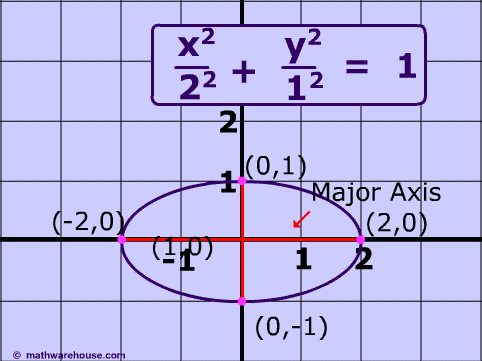While a teaching that focuses on Europe isn't necessarily bad (certainly great things in the history of mathematics have happened there...), I do see intrinsic harm in failing to contextualize these contributions. As I've stated previously on this blog, the progress of algebra over the ages can be found in:
- Procedural Babylonian and Egyptian texts around the 19th-century BCE
- Procedural Chaldean texts from the seventh century BCE
- Procedural Greek texts from the fourth-century BCE
- Procedural Indian texts from the fifth-century CE
- Rhetorical and Syncopated Arabic texts from the ninth-century CE, and
- Syncopated and Symbolic European texts from the 11th-century CE
But Robert! What's making you say this is all one coherent narrative? Isn't it completely possible that some of these civilizations developed mathematics independent of one-another?
That is an excellent question. It is possible... likely even, but only for one of the civilizations listed here. It is demonstrably NOT the case for the rest. This blog entry will focus on the evidence that shows how mathematics was passed from civilization to civilization (and consequently, how when the mathematics of say, Europeans, is studied in great detail, it needs to be understood as a piece of a much bigger narrative).
As an aside, up until the beginning of the Scientific Revolution in Europe, significant advances in mathematics almost invariably had close ties to astronomy.
Babylonia → Chaldea
Okay, this isn't so hard to imagine. Same geographic region. They both wrote in cuneiform and used sexagesimal. It's pretty clear Chaldean tables have a lot in common with Babylonian star catalogs. Moving on.
Chaldea → Greece
The conquests of Alexander the Great were from 335 BCE to 324 BCE and established the reaches of the Hellenistic kingdoms as far as India.
The first known trigonometric table was compiled by Hipparchus of Nicaea (180 – 125 BCE) who divided the circle into 360 degrees and fractions of chord lengths in sexagesimal (base 60). Paraphrased from page 107 of "A History of Mathematics, 3rd Ed." by Uta C. Merzbach and Carl B. Boyer: Hipparchus likely adopted this convention from Hypsicles (190 – 120 BCE), who wrote an adaptation of a work explaining a Babylonian technique for computing the rise times (at the latitude of Alexandria) of the signs of the zodiac. Both Hypsicles's adaptation and the Babylonian text divided the ecliptic into 360 degrees.
Also, on page 3 of “An Introduction to the History of Algebra” by Jacques Sesiano, it reads: "Ptolemy (A.D. 150) mentions... that since the beginning of the reign of Nabonassar (747 B.C.), "the ancient (Mesopotamian) observations are, on the whole, preserved down to our own time."
Chaldea & Greece → India
This is the hardest one, since it's not clear how much Indian mathematics originated on the subcontinent from the time of the Indus Valley Civilization (flourished between 2600 – 1900 BC) onward, and how much of it came from the Hellenistic kingdoms or prior contact with Mesopotamia.
The Āryabhaṭīya (499 CE) describes degrees and sexagesimal in verses 3.1 and 3.2:
- 1 revolution = 12 signs
- 1 sign = 30 degrees
- 1 degree = 60 arc-minutes (kalās)
- 1 arc-minute (kalās) = 60 arc-seconds (vikalās)
- 1 arc-second (vikalās) = 60 arc-thirds (tatparās)
Based on what I've said so far, this might appear Babylonian in origin, but this is tricky because the degree (though apparently not sexagesimal) appear in the Rigveda (most likely between 1500 – 1200 BCE, though possibly between 1700 – 1100 BCE):
Twelve spokes, one wheel, navels three.
Who can comprehend this?
On it are placed together
three hundred and sixty like pegs.
They shake not in the least.
— Dirghatamas , Rigveda 1.164.48
For what it's worth, the Egyptians and Mesopotamians (thus completing ancient trifecta of Egypt, Mesoptoamia, and the Indus Valley) were also both fond of cutting the sky into 12 sections (one for each lunar cycle or 'month') and within each section, taking particular note of 3 stars or groups of stars.
Anyway, if there was any one civilization to develop mathematics independently of the others on this list, it would have been India.
Greece & India → Arabia
The following is based almost entirely on page 205 of "A History of Mathematics, 3rd Ed." by Uta C. Merzbach and Carl B. Boyer:
The first century of Muslim Empire had been devoid of scientific achievement. Arab conquerors fought amongst themselves and with their enemies until about 750 CE when their warlike spirit subsided. Under the rule al-Mamum, the 7th caliph of the Abbasid Caliphate, a House of Wisdom comparable to the ancient Museum in Alexandria was built in Baghdad. This institution served as a focus of medieval scholarship until it was destroyed by the Mongols in the 13th century.
In this time, Al-Mamun is said to have had a dream in which Aristotle appeared and became determined to have made Arabic versions of all of the Greek works he could lay his hands on. From the Byzantine Empire, with which the Arabs now maintained an uneasy peace, Greek manuscripts were obtained through treaties.
Delegations of scholars from India were also invited to share their knowledge of mathematics and astronomy. Probably one of the more significant examples of mathematics crossing lines of civilization is the use of Brahmangupta’s Khandakhadyaka by House of Wisdom scholar Al-Biruni (who amazingly, read it in the original Sanskrit).
Arabia → Europe
Since the fall of Western Rome in the 5th century CE, Medieval Christian Europe had been practically devoid of scientific achievement. This changed significantly in the 11th-13th centuries with the transmission of knowledge to Europe from the Muslim Empires, primarily through the Iberian Peninsula, which was known to the Arabs as Al-Andalus.
Particular points of transmission to Europe were the 1085 conquest of Toledo by Spanish Christians, the 1091 re-claiming of Sicily by the Normans (after the Islamic conquest in 965) and the Crusader battles in the Levant from 1096 to 1303. Additionally, a number of Christian scholars such as Constantine the African (1017-1087), Adelard of Bath (1080-1152) and Leonardo Fibonacci (1170-1250) traveled to Muslim lands to learn sciences.
Europe Onward
The reason the rest of the world continues this now 4000 year-long story is because Europe, from the 16th century onward, became obsessed with a little something called "colonialism". The Pan Afro-Eurasian heritage of mathematics was of course key (it still is) to the Scientific Revolution and the Industrial Revolution, both which have continued to this day.
So yeah... pretty good reasons to think it's all one narrative.







![C = 2\pi a \left[1 - \sum_{n=1}^\infty \left(\frac{(2n - 1)!!}{2^n n!}\right)^2 \frac{e^{2n}}{2n - 1}\right],](http://upload.wikimedia.org/math/0/a/1/0a1f9b3824382486507885622ddcf283.png)
.jpg)










